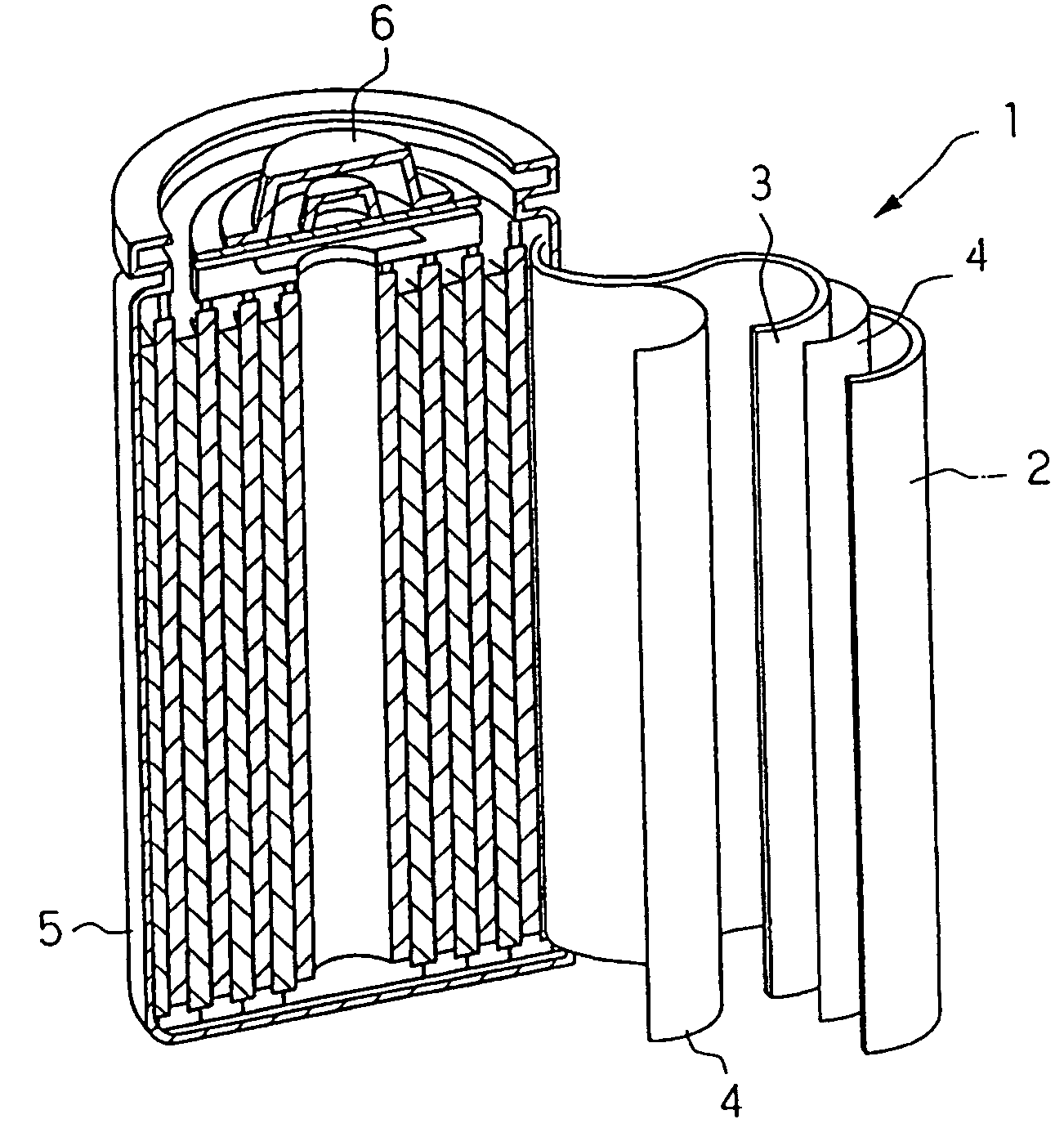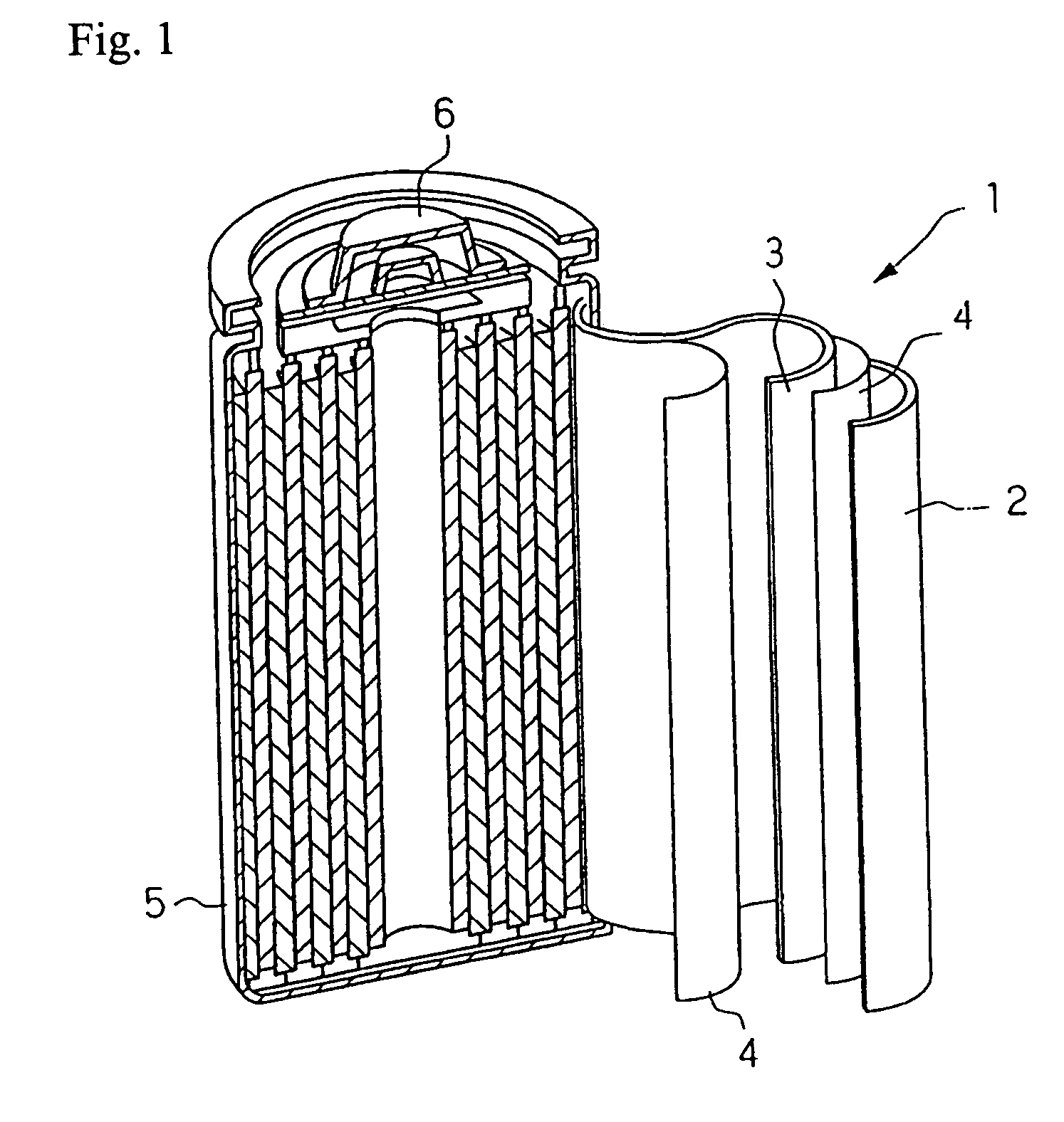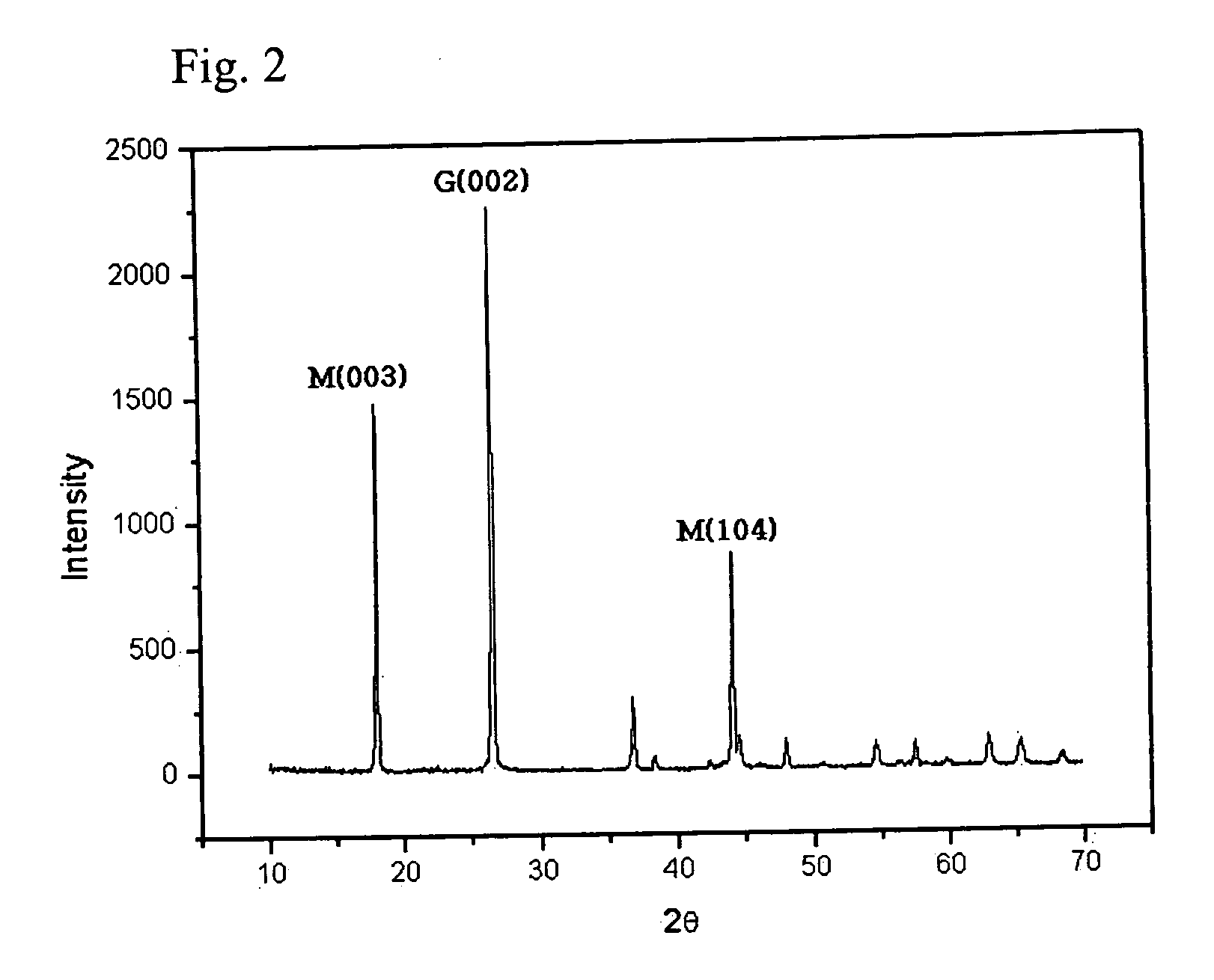Negative active material for a lithium secondary battery, a method of preparing the same, and a lithium secondary battery comprising the same
a secondary battery and negative active material technology, applied in the direction of vanadium compounds, non-aqueous electrolyte cells, cell components, etc., can solve the problems of low reduced acceptance of tin oxide for battery use, and low capacity in terms of energy density per unit volume of an electrod
- Summary
- Abstract
- Description
- Claims
- Application Information
AI Technical Summary
Benefits of technology
Problems solved by technology
Method used
Image
Examples
example 1
[0084] Li2CO3, V2O3, and MoO3 were mixed in a Li:V:Mo mole ratio of 1.08:0.9:0.02 in solid-phase. The mixture was heat-treated at a temperature of 1000° C. for 10 hours under a nitrogen atmosphere, and cooled to room temperature to prepare a metal oxide.
[0085] After a crystalline carbon material, natural graphite, was ground finely, 150 g of graphite was uniformly mixed with 150 g of the prepared metal oxide in a planetary mixer to obtain a negative active material.
example 2
[0086] A negative active material was prepared by the same method as in Example 1, except that Li2CO3, V2O3, and WO3 were mixed in a Li:V:W mole ratio of 1.12:0.85:0.05 in solid-phase.
example 3
[0087] Li2CO3, V2O3, and MoO3 were mixed in a Li:V:Mo mole ratio of 1.08:0.9:0.02 in solid-phase. The mixture was heat-treated at a temperature of 1000° C. for 10 hours under a nitrogen atmosphere, and cooled to room temperature to prepare a metal oxide.
[0088] After a crystalline carbon material, natural graphite, was ground finely, 210 g of graphite was uniformly mixed with 90 g of the prepared metal oxide in a planetary mixer to obtain a negative active material.
PUM
| Property | Measurement | Unit |
|---|---|---|
| thickness | aaaaa | aaaaa |
| temperature | aaaaa | aaaaa |
| temperature | aaaaa | aaaaa |
Abstract
Description
Claims
Application Information
 Login to View More
Login to View More - R&D
- Intellectual Property
- Life Sciences
- Materials
- Tech Scout
- Unparalleled Data Quality
- Higher Quality Content
- 60% Fewer Hallucinations
Browse by: Latest US Patents, China's latest patents, Technical Efficacy Thesaurus, Application Domain, Technology Topic, Popular Technical Reports.
© 2025 PatSnap. All rights reserved.Legal|Privacy policy|Modern Slavery Act Transparency Statement|Sitemap|About US| Contact US: help@patsnap.com



